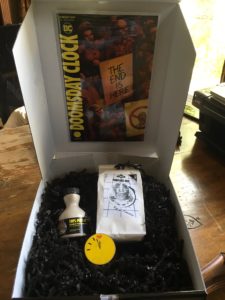Last week, I published a post on ‘Brighton as Silicon Beach’, and how the town’s technology sector has not lived up to all of its promise. I wanted to follow-up with a post describing the issues it faces.
I have a number of posts to write about this, and the next one will talk specifically about the present opportunities and promises. There is much to be excited about, and Brighton needs to position itself to profit from these things. I’ve had some very interesting conversations about this recently, and would be happy to have coffee with anyone who has something to add.
Brighton has long had an attractive and exciting digital economy, but it has not produced large-scale growth, and there is a lack of large companies and senior positions. Some of the issues include:
Office Space
The big problem for Brighton is that there is not enough office space for start-ups. In a 2013 FT article, the Chief Executive of Mediatonic described Brighton as “a city with tall, thin buildings, ideal if you’re a solicitor but not if you’re a tech business wanting several thousand feet of open plan.”
Without decent office space for large companies, it’s going to be difficult to attract and keep large organisations. Another issue I’ve seen raised is that not all the new buildings are suitable for tech companies, which require very good broadband. I’ve also heard mention of high business rates, although I’m not in a position to know how serious an issue that is.
Geographical Limitations
Brighton is a thin strip between the sea and a National Park, giving it very little room to expand, other than upwards; and a large number of sky-scrapers might detract from the very atmosphere that draws people here. But without more office space, growing companies have been held back from expansion, or even reduced the Brighton office to a satellite of a new, more expandable office elsewhere.
Travel to work is a significant issue. Part of the attractive Brighton life-style is walking or cycling to work, which means there is a lot of competition for housing, with few central options suitable for growing families. North of the Downs, it’s tricky to travel in, with few buses from nearby towns, and little parking in Brighton for driving in. If the technology sector grows, it will need to be east/west, which relies on train/bus commutes.
Brighton also suffers from being so close to London. While commuting to Brighton from Haywards Heath or Crawley is possible, it’s not much harder for residents there to head to London for more choice and more money. Hastings is, by train, almost as close to London as it is to Brighton.
Lack of Communication
I’ve seen a number of claims that communications between organisations are not as good as they should be; and that if the right people were just talking to each other, everything would be sorted. I have some sympathy with this. As an organiser for Brighton Java, I’ve found it hard to attract speakers or attendees from the two univerities just up the road. And there is definitely a need for intersections between companies, VCs and entrepreneurs (Sussex Founders is one recent initiative in this space).
We also need to develop excitement around specific technologies. Everyone knows that VR, Machine Learning and Blockchain are important areas, but how do we move beyond an awareness of this to developing a community of skilled developers? (If such communities already exist, the question becomes how to make them more visible). A lot of people are working on this, including Wired Sussex and Silicon Brighton; and Brighton scores very highly on the number and diversity of technical meet-ups. We need to make sure the potential here results in more visibly skilled people being available for start-ups that would like to move here. Employees need accurate information to work out which skills are worth investing their limited free time in.
One danger is that in setting up discussions between different groups is that this is an easy way to Do Something, and tends to happen for that reason. We have some excellent networking and discussion groups in town, alongside initiatives like Brighton Brains and the Digital Festival. How do we make use of the existing groups, and position them to help the sector expand?
Culture
There are some interesting cultural issues around Brighton. One possibility is that the laid-back, creative culture that draws some people here also repels others.
It’s also been suggested that we’re missing the sort of start-up culture that is seen in places like Silicon Roundabout, with a wealth of the accelators and incubators (I know there are some here, but the friend in question has a point – their presence in Brighton has not led to a wider cultural visibility).
Brighton has some great success stories. In recent conversations, people have pointed me to some very exciting companies, which makes me wonder why these aren’t more widely known. This is not just in the sense of press releases. We need to get to the point where locals can explain to friends considering moving here what great opportunities there are. Brighton is definitely an exciting town, but we need to communicate this more widely.
In conclusion
As I said in the previous post, I love Brighton, and I want to see it thrive. But the issues raised in this post are real and they are significant. It’s possible that these problems are intractable, and Brighton cannot support the unicorns we’d all like to see here. If that’s the case, we need focus on the things we definitely do well, such as being a boutique, creative enclave where ideas can emerge.
Thank you to everyone who has discussed this with me, on twitter, linked-in and in person. Those thoughts have informed this post, and I’ve made edits to the previous one as needed.









